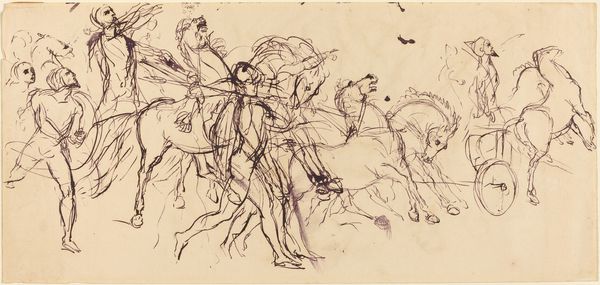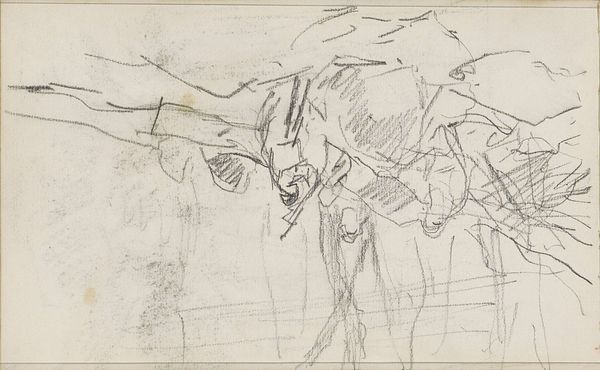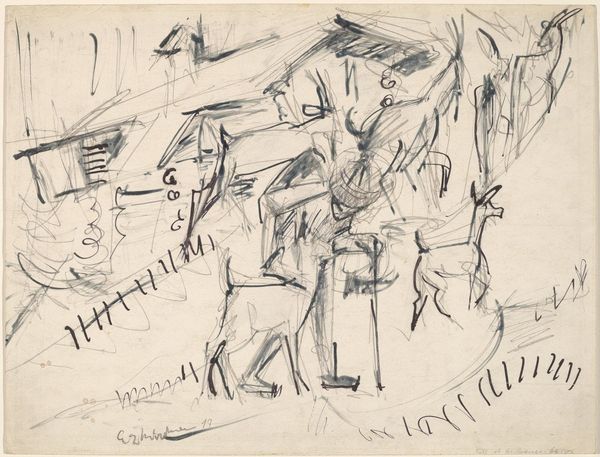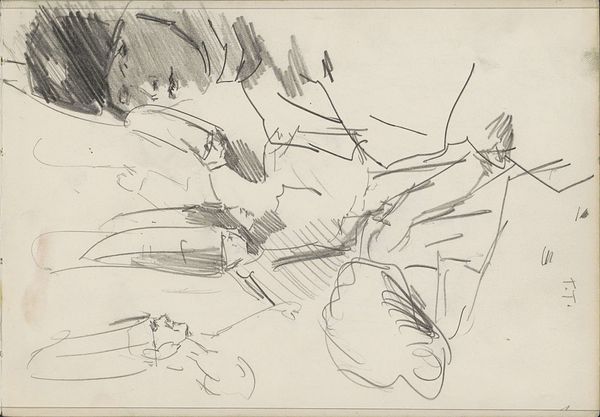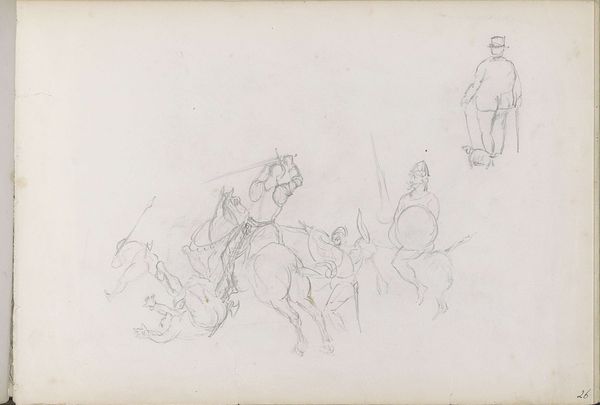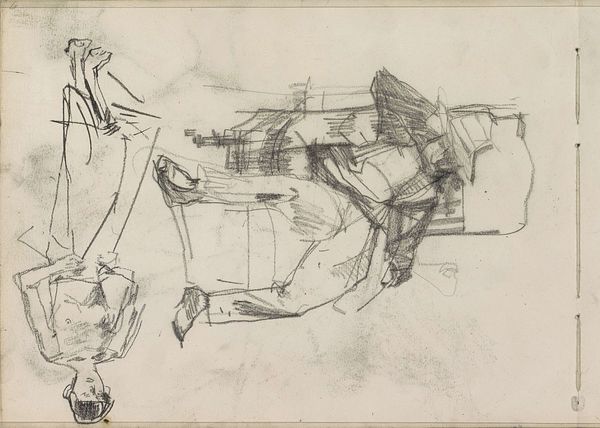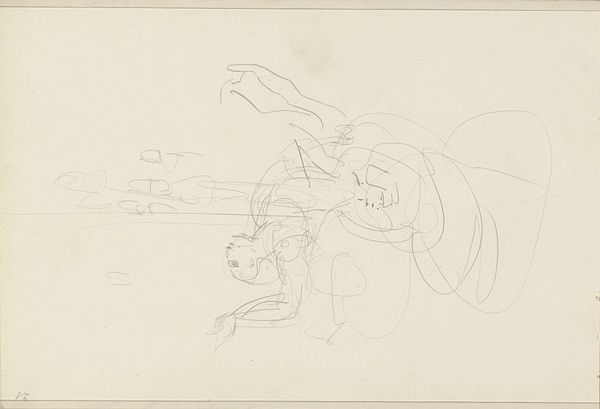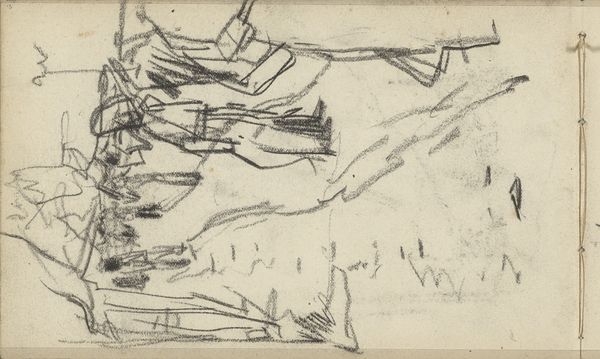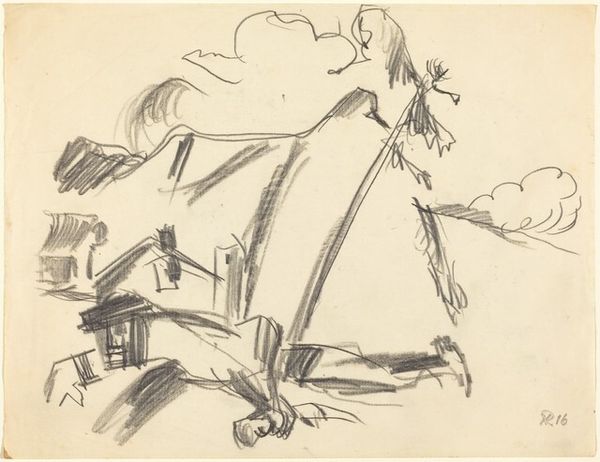
drawing, paper, pencil
#
drawing
#
imaginative character sketch
#
quirky sketch
#
paper
#
form
#
personal sketchbook
#
idea generation sketch
#
sketchwork
#
ink drawing experimentation
#
pencil
#
line
#
sketchbook drawing
#
storyboard and sketchbook work
#
sketchbook art
#
fantasy sketch
#
realism
Dimensions: height 260 mm, width 329 mm
Copyright: Rijks Museum: Open Domain
Curator: Gerrit Willem Dijsselhof, working between 1876 and 1924, left us this rather intriguing study entitled "Kreeften," or "Lobsters" in English, a work currently residing here at the Rijksmuseum. What strikes you first about it? Editor: An unfinished air. Like a thought caught mid-flight. The various lobsters, scattered on the page, give the sense of an artist thinking aloud. Is it pencil and ink? Curator: Indeed. A mix of pencil and ink on paper. It feels very much like a page ripped from a sketchbook, doesn't it? The hurried notations around each crustacean speak of fleeting observations. You almost feel as though you are standing in Dijsselhof's personal creative space. Editor: Absolutely. The way he circles and annotates particular details—you can see the artist wrestling with form, with how to capture light. I wonder, were lobsters a particular fascination, or simply a convenient model one day? Curator: That's the enduring mystery of sketchbooks, isn't it? The Rijksmuseum holds a large collection of sketchbooks precisely because they offer insight into the artist's process. But as a cultural artifact, the sketch becomes available to all, as evidence of genius at work. Do the personal reflections in the drawing make you interpret it differently? Editor: Knowing its role, the medium transforms the humble lobster into something more… a vessel, a placeholder for something grander. Dijsselhof's lobster seems to become a metaphor for the artistic struggle itself, for wrestling an idea into tangible form. The real or symbolic intention blends together in the museum context. Curator: And I'd add that these aren't just lobsters; they're diagrams of perception, where seeing becomes thinking becomes drawing. The Rijksmuseum here, showcasing what at first looks like just a lobster, displays also the act of thinking and observation itself. Editor: In that sense, the sketch escapes its origins and offers everyone the permission to doodle, experiment, and find beauty in the in-between spaces of thought.
Comments
No comments
Be the first to comment and join the conversation on the ultimate creative platform.

